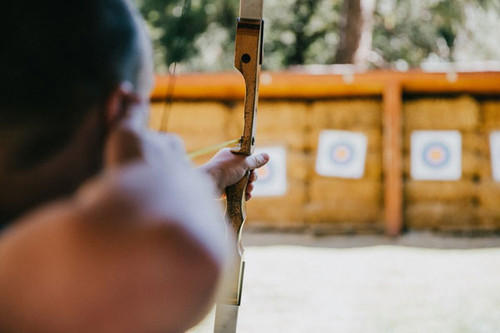Why You Should Never Dry Fire A Bow
Mar 9th 2020
Whether you’re an experienced archer or you’re just getting started, one critical mistake you want to avoid is dry firing your bow. This usually happens on accident, but anyone who has ever been around a dry fired a bow knows there are consequences. Not only is there a loud and terrible twang, but you can also damage your bow. Read on to learn about dry firing and how you should avoid this archery mistake.
What is Dry Firing?
Dry firing, also known as dry loosing, is when you draw back and release the bowstring without an arrow nocked. Any type of bow can be dry fired, including crossbows. A dry fire can happen accidentally if your arrow isn’t properly nocked or if your fingers slip on the string. It can happen to anyone, including experienced archers, so don’t be too hard on yourself—just check your bow for damage and try to make sure it doesn’t happen again.
It Could Cause Serious Damage

While many people like to dry fire a firearm for practice and weapon familiarity, you cannot safely do the same thing with a bow. When you dry fire a bow, instead of transferring the harnessed energy of the string into the arrow, your string has to deal with the reverberation once you release. Many people strive to avoid any type of vibration in the string, going so far as to buy dampeners for everyday practice. If even the small, regular vibrations of the string can cause damage to bow parts, can you imagine what type of damage all that extra energy can cause?
The higher the draw of your bow, the more damage a dry fire can inflict. For example, dry firing a crossbow or compound bow is much worse than dry firing a recurve. Some of the most common damage you can expect from dry firing includes:
- Warped Cam Tracks
- Bent Cams
- Derailed Bowstring
- Broken Bowstring
- Splintered Bow Limbs
Your Bow Could Literally Explode

If the only damage to your bow after a dry fire is a derailed string, you can probably consider yourself lucky. Minor bow damage is far from the worst thing that could happen. Dry firing a crossbow, compound bow, or recurve bow could cause a literal explosion! Plastic or wood parts flying through the air, metal pieces becoming shrapnel, and a tightly coiled string lashing back at your face—these are real possibilities as a result of a dry fired bow.
What To Do After A Dry Fire
After a dry fire, you want to complete a full inspection of your bow to ensure there is no damage. Heavier draw bows are more likely to sustain damage from dry fires, so check those meticulously. Make sure you don’t miss anything by taking your bow to an archery shop for a more comprehensive inspection.
Have questions about dry firing your bow? Reach out to our staff shooters today for expert advice.







